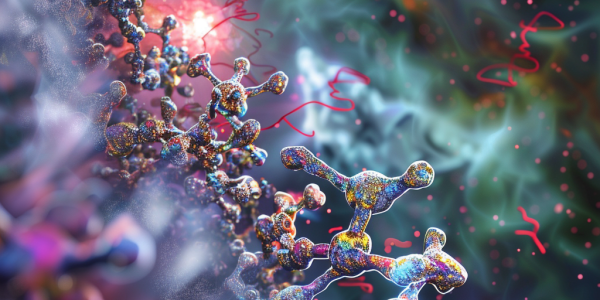Breakthrough in Quantum Physics: Researchers Control Hybrid Electron-Photon States in Helium
An international team led by Dr. Lukas Bruder has achieved a groundbreaking milestone in quantum physics by successfully controlling hybrid electron-photon quantum states in helium atoms using the FERMI free electron laser. This innovative research, published in Nature, utilizes advanced laser pulse-shaping techniques to manipulate quantum states, paving the way for advancements in quantum computing and technology. Discover how this study could revolutionize the field of quantum mechanics and its applications.
Three Novel Superconductors Discovered, Expanding Understanding of Quantum States
Researchers have identified three new forms of superconductivity in two-dimensional materials, revealing diverse electron pairing mechanisms that challenge existing theories. This breakthrough could lead to revolutionary technologies, including room-temperature superconductors, lossless power grids, and advanced transportation systems. The discoveries highlight the versatility of materials science and promise to deepen our understanding of superconductivity.
Groundbreaking Study Reveals Nano-Switch Mechanism in Electron Carrier Protein
A groundbreaking study from Japan reveals a nano-switch mechanism in ferredoxin, a crucial electron carrier protein essential for energy production in living organisms. This research uncovers how a single hydrogen atom influences the protein’s electron transport capabilities, enhancing our understanding of redox reactions. The findings hold promise for developing ultra-sensitive sensors and novel therapeutic agents, paving the way for advancements in environmental monitoring and medical diagnostics.
Breakthrough Study Reveals Dynamics of Quantum Entanglement at Attosecond Scale
Researchers from TU Wien and China have made significant breakthroughs in understanding quantum entanglement dynamics at attosecond scales. Their study, published in Physical Review Letters, reveals the temporal evolution of entanglement, challenging traditional views and paving the way for advancements in quantum technologies. This research could enhance the reliability of quantum states, crucial for future quantum computing and secure communication systems.
Groundbreaking Discovery of Carbon-Carbon One-Electron σ-Bond
A groundbreaking study reveals direct evidence of a carbon-carbon one-electron σ-bond, a significant milestone in chemistry. This discovery, achieved through advanced techniques like X-ray diffraction and Raman spectroscopy, validates theoretical predictions and opens new avenues for research in chemical bonding and material development.
Breakthrough in Orbitronics: First Imaging of Monopole-like Structures in Chiral Topological Semimetals
Recent research published in Nature Physics has successfully imaged orbital angular momentum monopoles in chiral topological semimetals PtGa and PdGa. Utilizing advanced techniques like circular dichroism in angle-resolved photoelectron spectroscopy, scientists revealed unique monopole-like structures and their controllable polarity. These findings not only confirm the existence of these orbital textures but also open new avenues for orbitronic devices, promising advancements in information processing and quantum computing.
MIT Physicists Uncover Edge States in Ultracold Atoms, Paving Way for Lossless Energy Transmission
MIT physicists have made a groundbreaking discovery in quantum physics, capturing images of electrons flowing without resistance along the edges of materials. This phenomenon, known as edge states, could revolutionize energy and data transmission, enabling super-efficient circuits that minimize energy loss. Published in Nature Physics, this research not only validates decades of theoretical work but also opens new avenues for technological advancements in electronics and telecommunications.
The Importance of Cookies in Online Privacy
Explore the critical role of cookies in online privacy, distinguishing between essential and optional cookies that enhance user experience. Understand how managing cookie preferences empowers users while delving into groundbreaking research on charge density waves using terahertz spectroscopy, revealing new insights into material properties.
Physicists Capture Direct Observational Evidence of Wigner Crystal, a Quantum Phase of Matter
Physicists have achieved a significant breakthrough in capturing direct observational evidence of a Wigner crystal, a peculiar form of matter proposed by theoretical physicist Eugene Wigner almost 90 years ago. This crystal, made up of free electrons forced together in a neat, crystalline lattice without atoms, has long been a subject of fascination and study. Al Yazdani, a physicist from Princeton University, expressed the significance of visualizing the Wigner crystal, stating that it not only confirms many of its properties but also enables new avenues of study that were previously inaccessible. The visualization of the Wigner crystal provides a unique opportunity to delve into the behavior of this quantum phase of matter, shedding light on its formation and properties. This breakthrough opens up new possibilities for further exploration and understanding of the fundamental nature of matter.
MIT Achieves Precise Control of Ultrathin Magnet at Room Temperature
MIT researchers achieve precise control of an ultrathin magnet at room temperature, paving the way for faster and more efficient processors and computer memories. This breakthrough could lead to magnetic-based devices consuming less energy than traditional silicon-based devices, offering unprecedented speed, efficiency, and scalability. The researchers utilized pulses of electrical current to switch the direction of the device’s magnetization at room temperature, harnessing the fundamental property of electrons called spin. This development is crucial as it makes magnets composed of atomically thin van der Waals materials practical for use outside a laboratory setting.










